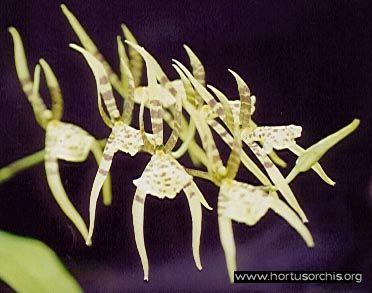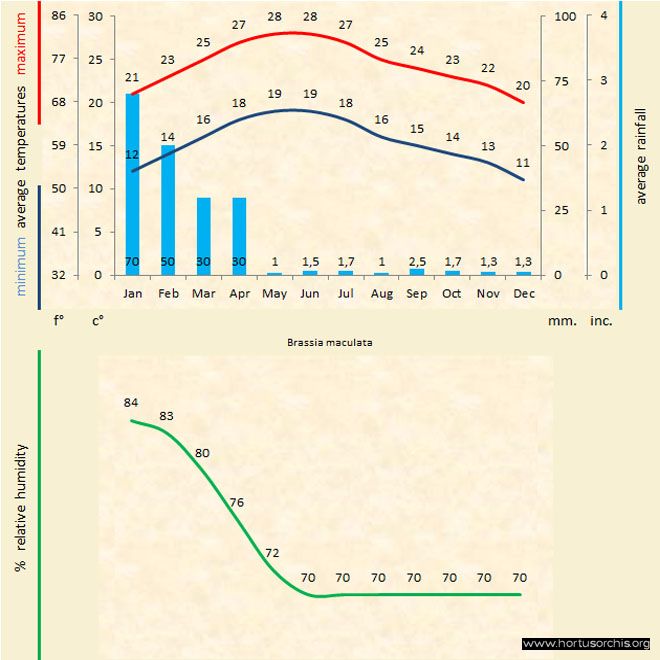
| Brassia maculata photo Z |
| taxonomy | described by | Brown, Robert |
| published in | Hortus Kewensis 5 : 215 november 1813 | |
| Catalogue of the Plantes Cultivated in the Royal Botanical Garden at Kew, London (2nd. ed.) | ||
| Family | Orchidaceae | |
| Subfamily | Epidendroideae | |
| Tribe | Cymbidieae | |
| Subtribe | Oncidiinae | |
| Genus | Brassia R. Brown 1813 | |
| metabolism | CAM pathway, stomata of the leaves are open at night. | |
| (K.Silvera, L.S. Santiago, J.C. Cushman, K. Winter - International Symposium on Plant Biology, August 2013) | ||
| it is useful give the soluble mineal nutriens, on the roots. | ||
| native of | origins | clearings in humid forests of Carabbian (Jamaica, Syon Gardens), Mexico (Campeche, Chiapas, Guerrero, |
| Oaxaca, Quintana Roo, Tabasco, Veracruz, Ocosingo), Belize (Cayo, Stann Creek, Toledo), | ||
| Guatemala (Petèn, Santa Rosa), Honduras (Comayagua, San Luis), El Salvador (Ahuachapàn), | ||
| Nicaragua (Nueva Segovia) | ||
| altitude | 0 - 1666 m (0 - 5500 ft) | |
| habitat | climate informations from Belmopan (Cayo, Belize) | |
| Köppen climate classification : Am, tropical monsoon climate (a dry season and a wet season very rainy) | ||
| the weather station data (temperatures are calculated for an altitude of 800 m / 2640 ft) : | ||
 |
||
| photoperiod | in Belmopan this orchid bloom with a photoperiod, that varies during the year, from 13 h 08 m' to 10 h 52 m' | |
| life form | epiphyte or litophyte | |
| brightness | partial shade | |
| inflorescence | length | 32 - 34 cm (12.8" - 13.6"), basal |
| nr flowers | 8 - 11, fragrant | |
| size | single flower 10 L 4 cm (4" L 1.6") | |
| duration | inflorescence length, ≈ 30 days | |
| time | to bloom from birth, ≈ 60 days | |
| CITES | appendix | II |

